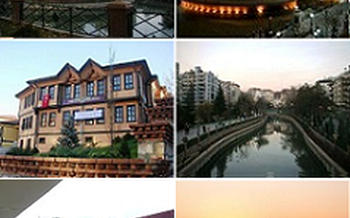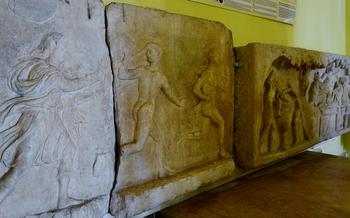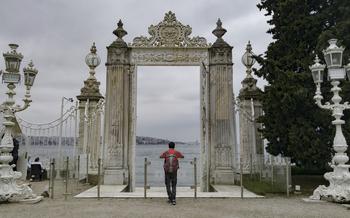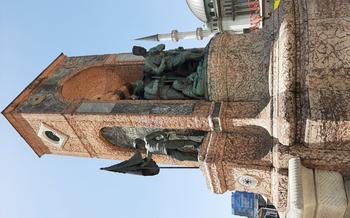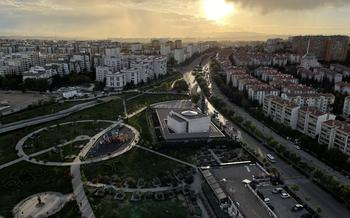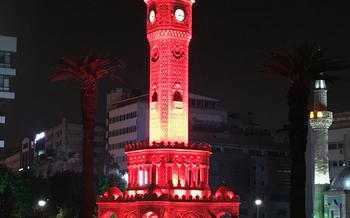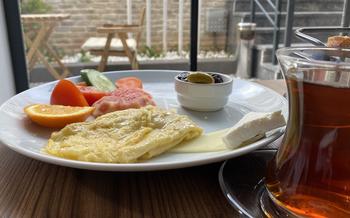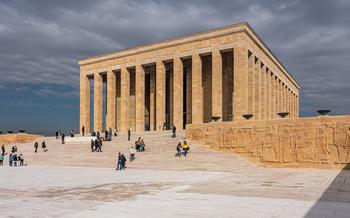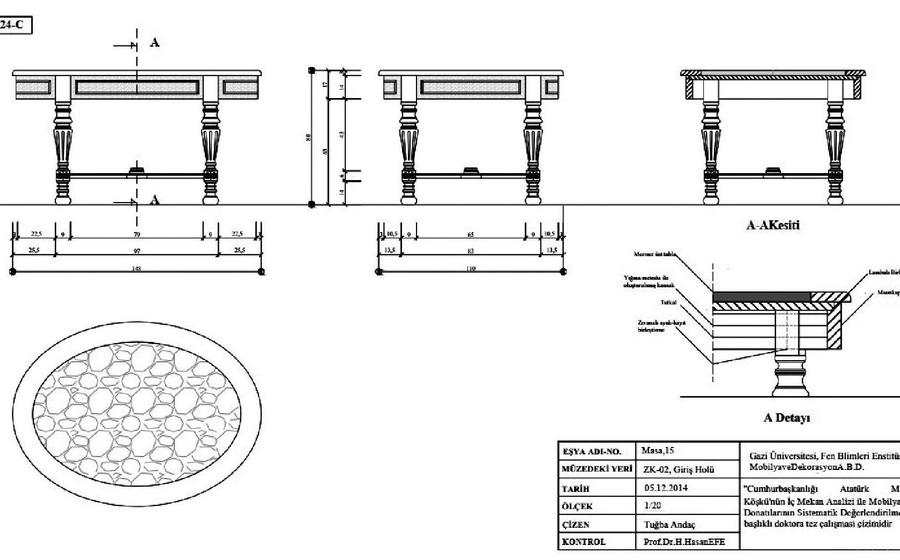
Cankaya House Atatürk Museum
- The Cankaya Palace and its Historical Significance:
- Atatürk's Legacy in Cankaya
- Exploring the Museum's Exhibits
- The Architectural Highlights of Cankaya Palace
- Guided Tours and Educational Programs
- Atatürk's Personal Touch:
- The Presidential Legacy
- Historical and Cultural Significance:
- The Gardens and Grounds
- The Changing Role of the Palace
- Educational Resources and Publications
- Events and Exhibitions: A Dynamic Cultural Hub
- The Symbol of Republican Turkey
- Insider Tip:
The Cankaya Palace and its Historical Significance:
The Cankaya Palace, initially constructed as a modest mansion in 1912, has undergone significant transformations to emerge as the prominent presidential residence and a symbol of modern Turkey. The palace acquired its distinctive identity during the era of Mustafa Kemal Atatürk, the founder of the Turkish Republic, who made it his primary residence. The architectural style of the palace is a harmonious blend of traditional Turkish and modern European elements, reflecting the transition that Turkey was undergoing during Atatürk's presidency. It served as the seat of the Turkish presidency until 2014 when it transitioned into the Cankaya House Atatürk Museum, preserving and showcasing the legacy of the great leader.
Atatürk's Legacy in Cankaya
Mustafa Kemal Atatürk, the revered founder of the Turkish Republic, played a pivotal role in shaping the destiny of Cankaya. In 1923, he made the bold decision to move the capital of Turkey from Istanbul to Ankara, a strategic move that symbolized a break from the Ottoman past and the dawn of a new era. With this decision, Cankaya became the heart of the newly established republic, and the Cankaya Palace served as the official residence and workplace of Atatürk.
During his presidency, Atatürk transformed the Cankaya Palace into a center of political and diplomatic activities. He received foreign dignitaries, held cabinet meetings, and made important decisions that shaped the course of the young republic. The palace witnessed countless historical events, including the signing of the Treaty of Lausanne in 1923, which recognized Turkey's independence and established its modern borders.
Atatürk's legacy is deeply intertwined with the Cankaya Palace. He spent many years of his life within its walls, working tirelessly to build a modern, secular, and progressive Turkey. Today, the Cankaya House Atatürk Museum stands as a testament to his vision and leadership, preserving his personal belongings, documents, and memories for posterity.
Exploring the Museum's Exhibits
The Cankaya House Atatürk Museum offers a fascinating glimpse into the life and times of Mustafa Kemal Atatürk, the founder of the Turkish Republic. Through a variety of exhibits and displays, the museum showcases Atatürk's personal belongings, documents, photographs, and historical artifacts. Visitors can explore the rooms where Atatürk lived and worked, gaining a deeper understanding of his daily life, political career, and diplomatic activities.
The museum's exhibits include a collection of Atatürk's personal belongings, such as his uniforms, hats, and walking sticks. These items provide a tangible connection to the man himself, offering insights into his personal style and preferences. Visitors can also view Atatürk's official documents, including speeches, letters, and decrees, which shed light on his political vision and leadership.
The museum also features a collection of photographs that capture Atatürk's life and career. These images depict him in various settings, from military campaigns to diplomatic meetings, providing a visual record of his journey from soldier to statesman. Additionally, the museum displays historical artifacts that were used by Atatürk during his presidency, such as his desk, chairs, and tableware, offering a glimpse into his working environment.
To enhance the visitor experience, the museum incorporates interactive exhibits that engage visitors and provide a deeper understanding of Atatürk's era. These exhibits include multimedia presentations, touchscreens, and interactive maps that allow visitors to explore Atatürk's life and achievements in a dynamic and engaging way. Through these interactive elements, the museum brings history to life, making it accessible and relatable to visitors of all ages.
The Architectural Highlights of Cankaya Palace
The Cankaya Palace stands as a testament to the architectural prowess of its designers and builders. Its unique style blends traditional Turkish elements with modern European influences, creating a harmonious synthesis that reflects the nation's rich cultural heritage. The palace's symmetrical layout, intricate stonework, and elegant domes are reminiscent of classical Ottoman architecture, while its spacious interiors, large windows, and functional design showcase a distinctly modern aesthetic.
Renowned Turkish architects, including Vedat Tek, Arif Hikmet Koyunoğlu, and Giulio Mongeri, collaborated on the palace's design, ensuring its architectural integrity. The palace's central block, known as the Çankaya Köşkü, features a grand entrance portico supported by imposing columns. The interiors are adorned with exquisite chandeliers, marble fireplaces, and ornate plasterwork, reflecting the opulence and grandeur of the Turkish Republic's early years.
The surrounding gardens, designed by renowned French landscape architect Henri Prost, complement the palace's architectural beauty. Lush green lawns, colorful flower beds, and meticulously trimmed hedges create a serene and inviting outdoor space. Visitors can stroll along the tranquil paths, admire the vibrant flora, and enjoy the breathtaking views of Ankara from the palace's elevated position.
Guided Tours and Educational Programs
To fully immerse yourself in the history of the Cankaya House Atatürk Museum, consider joining a guided tour. These tours, led by knowledgeable guides, provide an in-depth exploration of the palace's exhibits and Atatürk's legacy. Learn about the significance of each artifact, document, and personal item as you wander through the rooms where Atatürk once lived and worked.
The museum also offers a range of educational programs and workshops designed to engage visitors of all ages. These programs delve deeper into Atatürk's life, the history of the Turkish Republic, and the significance of the Cankaya Palace. Whether you're a student, a history buff, or simply curious to learn more about this remarkable figure, these programs offer a valuable opportunity to gain insights into Atatürk's era.
Atatürk's Personal Touch:
The Cankaya Palace holds a trove of personal touches and preferences that Atatürk incorporated into its design and decor, reflecting his unique personality and lifestyle. In his office, visitors can marvel at his antique furniture, carefully arranged bookshelves, and a grand piano, all chosen with meticulous care. The walls are adorned with paintings and photographs that capture his life's journey, from his military campaigns to his diplomatic endeavors.
One intriguing detail is the presence of a small room adjacent to his office, known as the "secret room." Here, Atatürk could retreat to work on sensitive matters or simply seek solitude. The room is a testament to his commitment to privacy and his need for a quiet space away from the demands of his public life.
Another fascinating aspect of the palace is Atatürk's love for nature. The grounds are meticulously landscaped with trees, flowers, and walking paths, creating a peaceful oasis amidst the bustling city. He took great pride in his gardens and often spent time tending to them, finding solace in the tranquility of nature.
The preservation of these personal touches is a testament to the museum's commitment to showcasing Atatürk's legacy in an authentic and comprehensive manner. Visitors to the Cankaya House Atatürk Museum can immerse themselves in the life and work of this extraordinary leader, gaining a deeper understanding of his vision for a modern and progressive Turkey.
The Presidential Legacy
After Atatürk's passing, the Cankaya Palace continued to serve as the official residence of the Turkish presidents. Throughout the years, it has witnessed significant events and decisions that shaped the course of Turkish history. President İsmet İnönü, Atatürk's successor, resided in the palace during his presidency, maintaining the legacy of the founder. Subsequent presidents, including Celal Bayar, Cemal Gürsel, and Süleyman Demirel, also made the Cankaya Palace their official residence.
During their presidencies, these leaders hosted foreign dignitaries, held important meetings, and made crucial decisions that impacted the nation's domestic and international affairs. The palace became a symbol of continuity and stability in Turkish politics, representing the enduring principles of the Turkish Republic. In 2014, the palace officially transitioned from a presidential residence to a museum, preserving its historical significance and opening its doors to the public as a cultural heritage site.
Historical and Cultural Significance:
The Cankaya House Atatürk Museum holds immense historical and cultural significance for Turkey. As the former residence of Mustafa Kemal Atatürk, the founder of the Turkish Republic, it stands as a symbol of national identity and pride. The museum preserves and promotes Turkish history and culture through its exhibits, artifacts, and educational programs. It offers visitors a glimpse into the life and legacy of Atatürk, as well as the broader history of the Turkish Republic.
The museum's collection includes personal belongings, documents, photographs, and historical artifacts that provide insights into Atatürk's personal life, political career, and contributions to the establishment of modern Turkey. These exhibits showcase the significance of Atatürk's vision and leadership in shaping the nation's identity and paving the way for its development.
The Cankaya House Atatürk Museum is recognized for its contributions to cultural heritage. It has received numerous awards, including the prestigious European Museum of the Year Award in 200This recognition reflects the museum's commitment to excellence in preserving and presenting Turkish history and culture to both domestic and international visitors.
The Gardens and Grounds
The Cankaya Palace is surrounded by beautifully landscaped gardens and grounds that provide a serene and tranquil environment. These outdoor spaces are an integral part of the palace complex and contribute to its overall grandeur.
The gardens feature a variety of colorful flowers, lush greenery, and towering trees. Visitors can stroll along the winding paths, admire the vibrant blooms, and enjoy the fresh air. There are also several fountains and sculptures scattered throughout the grounds, adding to the aesthetic charm of the palace.
One of the highlights of the gardens is the Rose Garden, which boasts a collection of over 12,000 roses. Visitors can wander through the garden, marveling at the vibrant colors and delicate fragrances of these beautiful flowers.
The grounds also include a number of walking paths, allowing visitors to explore the natural beauty of the palace surroundings. These paths lead through wooded areas, past tranquil ponds, and offer stunning views of the city.
It is important to preserve the natural beauty of the palace grounds for future generations to enjoy. The gardens and grounds are a valuable asset to the Cankaya House Atatürk Museum and contribute to its unique and serene atmosphere.
The Changing Role of the Palace
The Cankaya Palace has undergone a remarkable transformation throughout its history. Initially constructed as a presidential residence, it has since evolved into a museum and cultural center. This transition reflects the changing needs and aspirations of Turkey as a nation. The palace's new role as a museum allows it to serve as a platform for preserving and showcasing Turkish history and culture. It provides a space for visitors to learn about Atatürk's legacy, explore the evolution of the Turkish Republic, and gain insights into the country's rich cultural heritage.
The transition from a presidential residence to a museum involved significant challenges. The palace had to be adapted to accommodate museum exhibits and ensure accessibility for visitors while preserving its historical integrity. Careful planning and collaboration were required to strike a balance between showcasing Atatürk's legacy and creating an engaging museum experience.
Despite the challenges, the Cankaya House Atatürk Museum has successfully transformed into a vibrant cultural institution. It continues to play a vital role in promoting national identity and pride, while also serving as a valuable resource for education and research. The museum's ongoing success demonstrates its ability to adapt and evolve to meet the needs of a changing society.
Educational Resources and Publications
The Cankaya House Atatürk Museum offers a range of educational resources and publications to enhance visitors' understanding of Atatürk's life and legacy. These resources include informative books and brochures that provide detailed accounts of Atatürk's accomplishments, his role in the Turkish War of Independence, and the establishment of the Turkish Republic. Visitors can also access online materials, such as digital archives and interactive exhibits, which offer a deeper dive into Atatürk's personal life, his political strategies, and the challenges he faced during his presidency.
The museum collaborates with educational institutions and organizations to develop educational programs and workshops that cater to students of all ages. These programs aim to promote research and understanding of Atatürk's era, encouraging critical thinking and historical analysis. Through these initiatives, the Cankaya House Atatürk Museum plays a vital role in preserving and disseminating knowledge about Atatürk's contributions to Turkey's history and culture.
Events and Exhibitions: A Dynamic Cultural Hub
The Cankaya House Atatürk Museum is not merely a repository of historical artifacts; it is also a vibrant cultural hub that hosts a variety of events and exhibitions throughout the year. These events serve to engage the public, promote cultural exchange, and provide a platform for scholarly discourse on Atatürk's legacy and Turkish history.
One of the highlights of the museum's calendar is the annual Atatürk Commemoration Ceremony, which takes place on November 10th, the anniversary of Atatürk's death. This solemn event features speeches, wreath-laying ceremonies, and cultural performances that honor the founder of the Turkish Republic.
In addition to commemorative events, the museum also hosts temporary exhibitions that explore various aspects of Atatürk's life and work, as well as Turkish history and culture. These exhibitions often feature rare artifacts, documents, and photographs that provide visitors with a deeper understanding of the past.
To stay updated on upcoming events and exhibitions, visitors can check the museum's website or follow its social media channels. By participating in these events, visitors can gain a richer and more immersive experience of the Cankaya House Atatürk Museum and the history it represents.
The Symbol of Republican Turkey
The Cankaya House Atatürk Museum stands as a powerful symbol of Republican Turkey, embodying the principles and values upon which the nation was founded. Its very existence represents the transition from the Ottoman Empire to a modern, secular republic. Within its walls, Atatürk laid the groundwork for a new Turkey, guided by the principles of democracy, progress, and national sovereignty.
The museum is a testament to Atatürk's vision for a modern, progressive Turkey. Its architecture, design, and exhibits showcase his commitment to modernization and Westernization. The museum serves as a reminder of the transformative power of leadership and the enduring legacy of Atatürk as the father of modern Turkey.
Official ceremonies, receptions, and events held at the palace reinforce its national significance. The presence of foreign dignitaries, heads of state, and other distinguished guests highlights the palace's role as a symbol of Turkey's diplomatic prowess and international standing.
Moreover, the museum fosters a sense of unity and patriotism among Turkish citizens. Visitors from all walks of life come to pay homage to Atatürk and learn about his life and work. The museum's educational programs and exhibits inspire a sense of national pride and encourage a deeper understanding of Turkey's history and culture.
Insider Tip:
For an immersive experience, time your visit to coincide with the changing of the guard ceremony that takes place daily at the Cankaya Palace. Witness the precision and discipline of the presidential guards as they perform this traditional ceremony, adding a touch of grandeur to your visit. Don't miss the opportunity to capture this solemn moment and gain a deeper appreciation for the rich history and traditions of Turkey.

